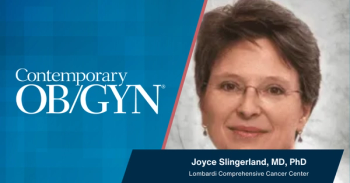
Midlife overweight status linked to higher morbidity
A recent study found overweight status in midlife, compared to normal body mass index, was linked to a higher burden of morbidity and greater proportion of life lived with morbidity.
Overweight status in midlife, compared to normal body mass index (BMI), was linked to a higher cumulative burden of morbidity and greater proportion of life lived with morbidity in the context of similar longevity, according to a recently published study in JAMA Network Open.1
Although evidence exists to support that obesity is associated with higher all-cause and cardiovascular mortality, the study authors state population-level prevention efforts have not been effective and it is estimated that nearly 1 in 2 US adults will be obese by 2030.
“While abundant evidence exists for the adverse outcomes associated with obesity, the potential of a survival advantage for overweight status, if one exists, may come at the cost of a greater proportion of life lived with morbidity and, subsequently, higher health care expenditures across the life course,” noted the authors.
The study sample was derived from the Chicago Heart Association Detection Project in Industry (CHA) cohort, which recruited nearly 40,000 men and women 18 years and older between 1967 and 1973. Study participants were followed up with for more than 40 years since baseline in-person examination linked with Medicare follow-up between January 1985 to December 2015.
The study’s primary outcome included quantification of all-cause morbidity burden with the Gagne combined comorbidity score ranging from -2 to 26, with a higher score associated with higher mortality. The mean overall survival time (total longevity) and differences in health care costs across BMI categories compared with normal BMI were also evaluated.
The total study sample consisted of 29,621 participants with a mean age of 40 years. Over 57% were men, 42.9% were women. Also, data show 46.0% had normal BMI, 39.6% were overweight, and 11.9% had classes I and II obesity at baseline.
The cumulative morbidity burden based on the Gagne score assessed per year was significantly higher among those who were overweight (7.22 morbidity-years), had classes I and II obesity (9.80 morbidity-years), and had class III obesity (10.32 morbidity-years), compared with those with a normal BMI (6.10 morbidity-years) in midlife (P <.001).
During the follow-up, 13,932 participants (47.0%) died with a similar mean age at death among those overweight (82.1 years [95% CI, 81.9 - 82.2 years]) and those with normal BMI (82.3 years [95% CI, 82.1 - 82.5 years]).
The study showed a younger mean age at death in the classes I and II obesity (80.8 years [95% CI, 80.5 - 81.1 years]) and class III obesity (77.7 years [95% CI, 76.2 - 79.1 years]).
Also, the proportion of life-years lived in older adulthood with a Gagne score of ≥1 was 0.38% in those with a normal BMI, 0.41% in those with overweight, and 0.43% in those with obesity.
When looking at cost, the cumulative median per-person health care cost in older adulthood were significantly higher among overweight participants ($12,390 [95% CI, $10,427 - $14,354) and those with classes I and II obesity ($23,396 [95% CI, $18,474 - $28,319]).
“The greater proportion of life lived with morbidity translated to higher adjusted cumulative and mean annual health care expenditures during older adulthood, which will have substantial consequences for health care costs as the aging population intersects with the obesity epidemic,” the authors wrote.
Reference
1. Khan SS, Krefman AE, Zhao L, et al. Association of Body Mass Index in Midlife With Morbidity Burden in Older Adulthood and Longevity. JAMA Netw Open. 2022;5(3):e222318. doi:10.1001/jamanetworkopen.2022.2318
Newsletter
Get the latest clinical updates, case studies, and expert commentary in obstetric and gynecologic care. Sign up now to stay informed.











